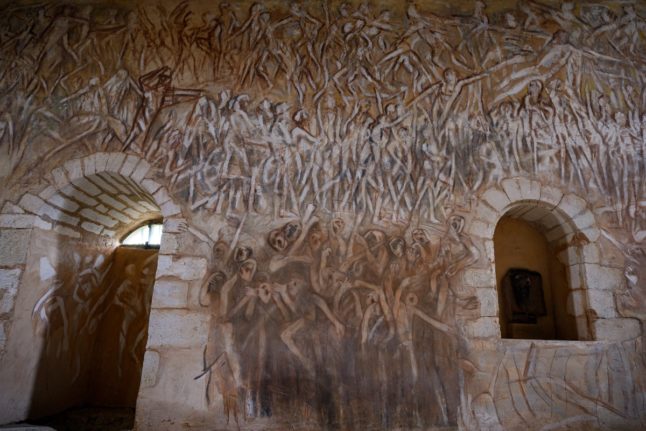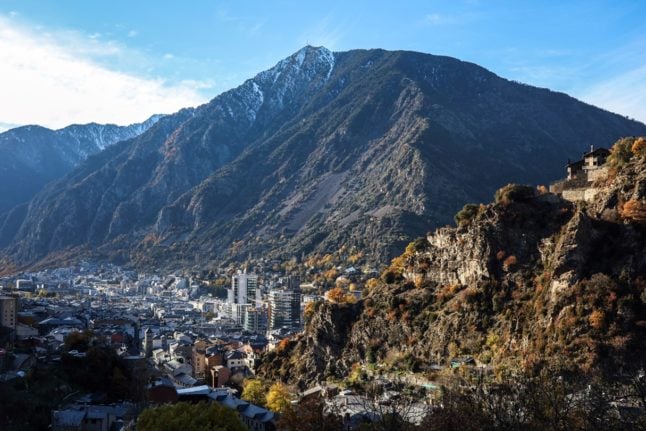Miklos Bokor, a Hungarian-French artist and World War II death camp survivor, picked the Maraden chapel to create his gigantic work in memory of the genocide of six million Jews under the Nazis.
But the 12th-century chapel, nestled between trees off a small road near Martel in the southwestern Lot département, is falling victim to the region’s inclement weather.
Some of the roof’s flagstones have come loose, and the rare visitors can clearly hear the rhythmic dripping of raindrops on the chapel floor, while humidity rises up the walls.
The mural itself is still intact, with hundreds of dark or bright entangled human silhouettes – engraved or painted – covering the walls and vault.
Bokor found the chapel “by chance”, said his close friend, Christine Simonart, a former pharmacist from nearby Martel.
“When he walked in, he immediately imagined it as a canvas for a mural” and acquired the building, she told AFP.
Born in 1927 in Budapest, Bokor was deported to the Auschwitz concentration camp in 1944. Both his parents died in Nazi death camps.
After the war, Bokor taught himself to paint, and settled in France in the 1960s, spending summers in the Lot.
He painted the chapel mural, which also contains biblical scenes and his own recollections from Auschwitz, between 1998 and 2002.
“It’s almost like a testament, a last artistic will,” said Simonart. Bokor died in 2019 in Paris.
Calling the mural “an incredible testimony,” Raphael Daubet, a former local mayor and now member of the French Senate, said he wants to help preserve the threatened heritage.
Bokor’s heirs have put the chapel up for sale, asking €500,000 based on the prices fetched by the artist’s paintings over the years, said estate agent Hugues de Pradel who is handling the sale.
“We have to act quickly,” said Daubet. “I have written to foundations, especially those dedicated to the memory of the Shoah, but I have not managed to find any institution able to make this acquisition,” he said.
As a historic monument, the chapel would qualify for public subsidies for any restoration work, “but we need a buyer who immediately makes it available in the public interest”.
Bokor’s work was regularly exhibited in France and elsewhere during his lifetime, and a number of his paintings are now in the permanent collection of the Museum of Modern Art in Paris.



 Please whitelist us to continue reading.
Please whitelist us to continue reading.
Member comments